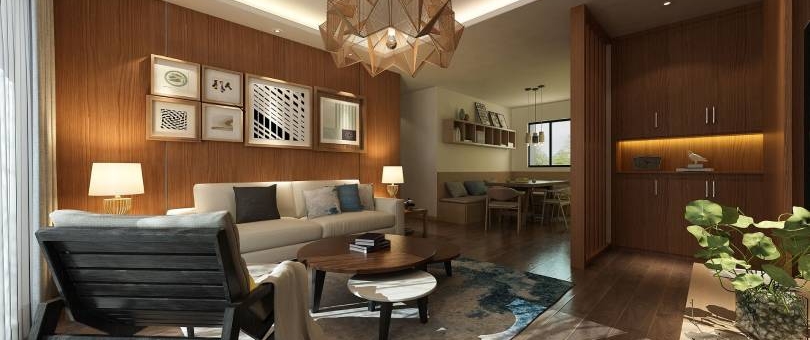Much like entire cities’ current efforts to replace their outdated street lights to save money, homeowners are catching on and want the same savings for their homes.
Light emitting diode, or LED, lights represent the most efficient and best lighting technology available today.
Their energy savings and durability give them high marks from homeowners undergoing renovations or building new structures.
How did this come about and how are homeowners now comfortable with choosing LED?
LED’s Transition from Expensive High-Tech to Eco-Lean Designer Picks
A few things kept LED from taking the top spot in lighting choices in the past.
- These were color and cost.
- Many designers recall the initial offering from LED as cold, too bright, and completely lacking personality.
- The light cast was too grim for most residential spaces and even some commercial areas.
Fortunately, demand for more warmth resulted in color temperature offerings that even rival incandescent bulbs with golden hues and yellow subtlety.
Now the LED lights come in the full spectrum that lies between UV and IR lights.
The typical color temperature for residences falls within the 2700 to 4100 Kelvin range from warm to cool.
The other issue with LEDs in the past was cost.
Initially, the technology was expensive. Even if homeowners would save money in the long run, it was a difficult sell when other options, like halogen, incandescent, and CFL bulbs, were cheaper on the shelves.
There wasn’t enough of a push to educate consumers on the benefits over time.
That changed once scientists were able to show savings of up to 80% on energy bills and reduced maintenance costs.
Next, manufacturers pursued research and development to come up with more options like smaller sizes, dimmability, and new LED light fixtures to make them competitive.
Increased production and demand brought the prices down to where we are today.
Overwhelmingly, people want LED to save their wallets, and local electricians nearby and designers are happy to deliver.
How to Use LED in Your Design to Save Money
The numerous ways LEDs can be used in your lighting design depend on the activities that occur within each space.
For instance, the kitchen is one of the focal points of the home.
Not only it is the area for preparing and cooking food, it’s also where friends and family gather around islands, chipping in to help while enjoying appetizers and drinks.
This means that kitchen lighting is best designed in layers to make it multi-functional.
LED Layers in the Kitchen
Most designers recommend canned LED lights recessed in the ceiling for a sleek look.
These lights set on a dimming switch allows for either bright light that disperses throughout the space, or a more subdued light.
Then chandelier LEDs over an island or bar counter give a focal point for gathering.
The good news about LED lights here is that even if the lights are near your guests’ heads, no heat is given off like older lights.
They won’t sweat uncomfortably while waiting for dinner.
Finally, accent LED lights under cabinets provide light for cutting foods, cooking, or plating on countertops.
Having different choices means that you won’t always require full lighting which can increase electricity bills.
Bathroom Brights with Options
The bathroom requires bright lighting for applying making and getting ready for the day, but you don’t want something too cool.
Place lighting on each side of the mirror to prevent shadows.
Give options like recessed lights over the shower and accent lights around a tub.
Dimmable switches are perfect for night-time and provide ‘night-light’ choices for children and older homeowners alike.
Living Room and Bedroom Warmth
These areas are typically places for relaxation.
The concepts of coziness and comfort are the first to come to mind.
Warmer color temperatures, layers for lighting choices, and dimming lights provide options for game night with the family to reading a book in a corner nook.
The key here is to keep it simple and not end up with more light than you actually need.
LED Outside
The lighting choices don’t end when you hit your deck.
Here, accent LEDs provide details along railings and stairs for both effect and safety.
Through the garden, lighting for walkways and stone paths always adds interest.
Around pools, barbecue pits, and fire pits are other areas where the details can make all the difference.
Finally, consider canopy lighting for large driveways or sport areas like tennis and basketball courts.
It’s important to note, however, that outdoors lighting should also be done on an as-needed basis.
One mistake homeowners make is adding excessive lighting that offsets the savings from switching to LED. Don’t overdo it!
LED lighting choices for designers and homeowners are plentiful, but don’t save the decisions for the final step.
Above all else, be sure to partner with a qualified LED electrician who is skilled in the mathematics of lighting design and knowing which products will work best in which area.
This is where the design can either start on the right foot or falter from lack of knowledge.
Sometimes you can get design help from your LED supplier.
Start early and make sure the lighting aspects of your overall build or renovation are determined during the design process, not along the way.
This is one of the biggest mistakes people make that leads to extra costs.
Don’t let lighting be the afterthought of your transformation.
When it’s done correctly, it brings out the beauty of your plan and helps you save at the same time.


